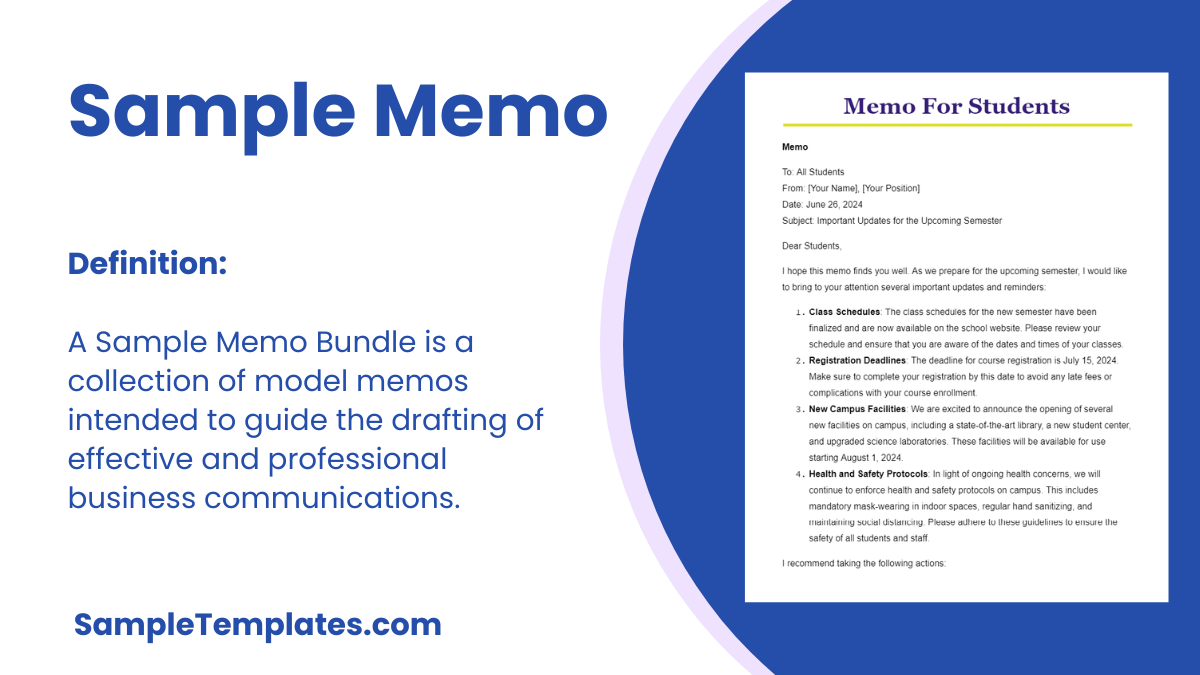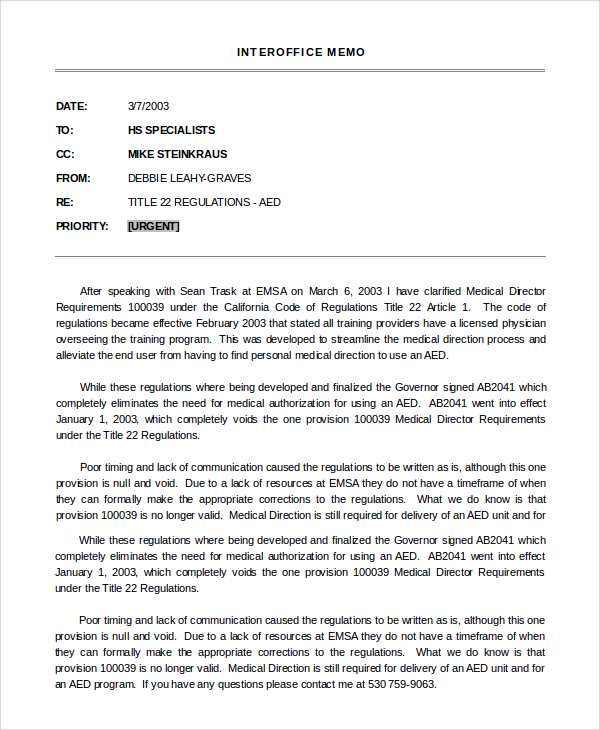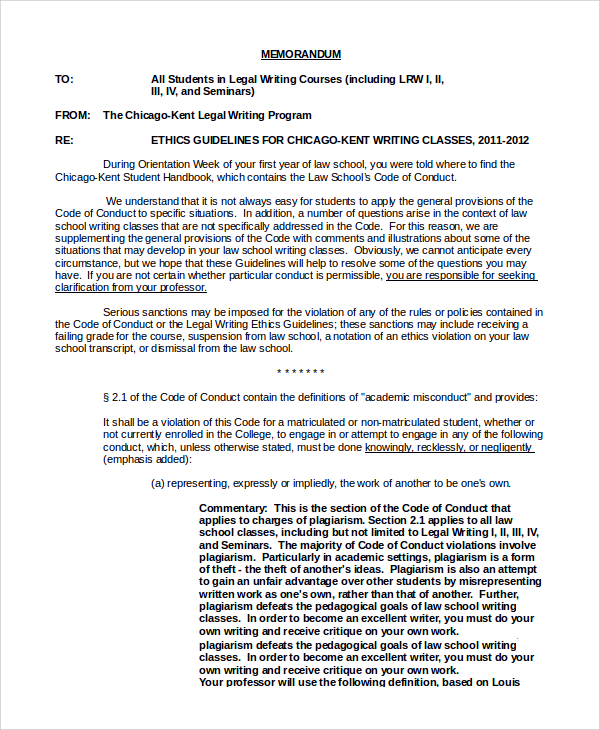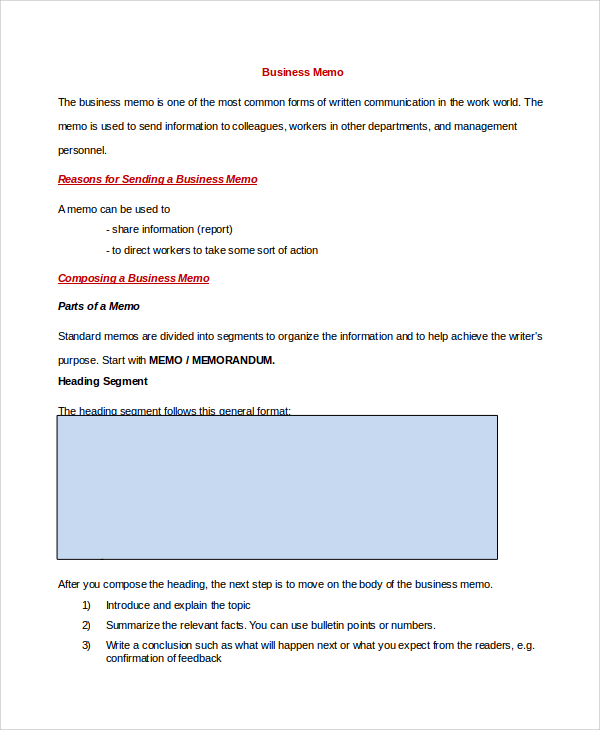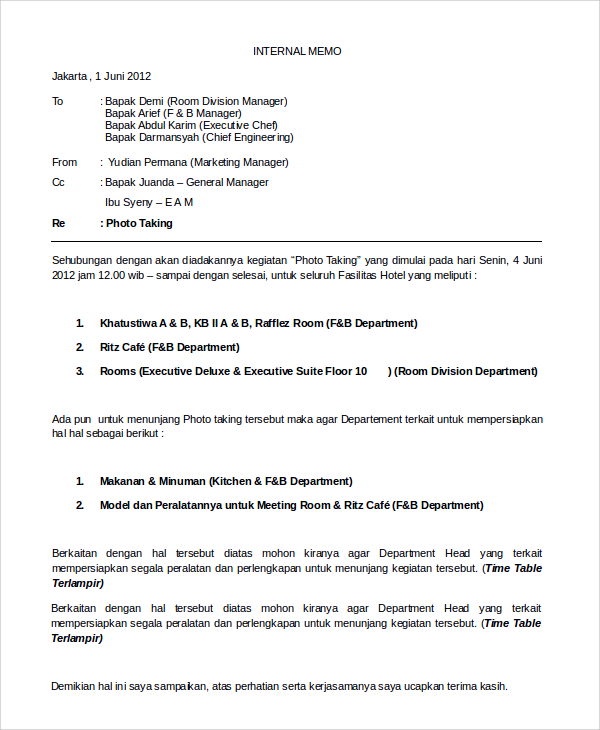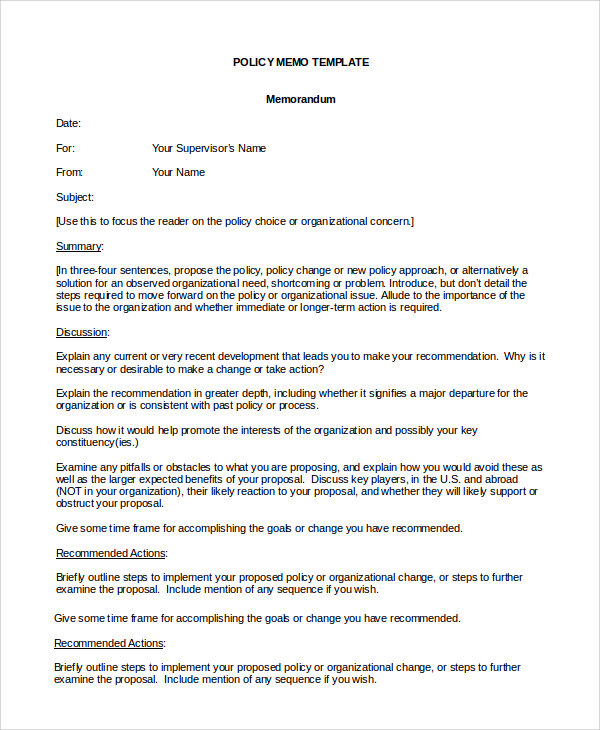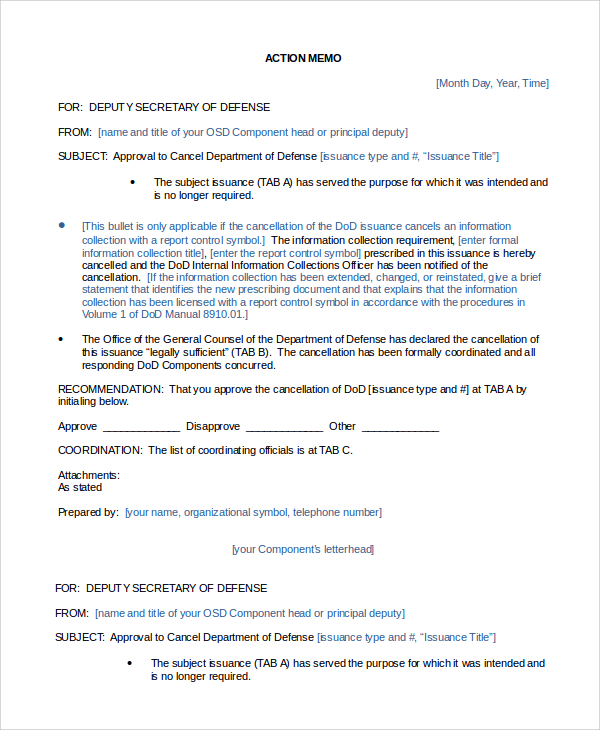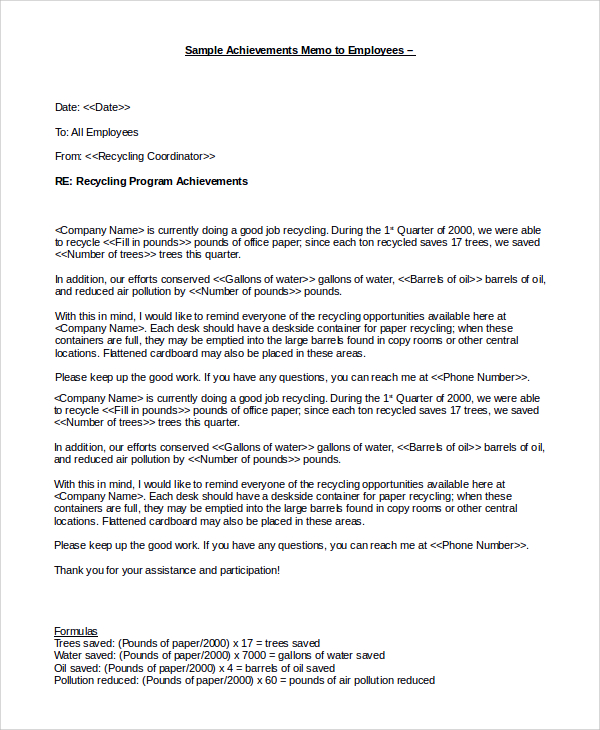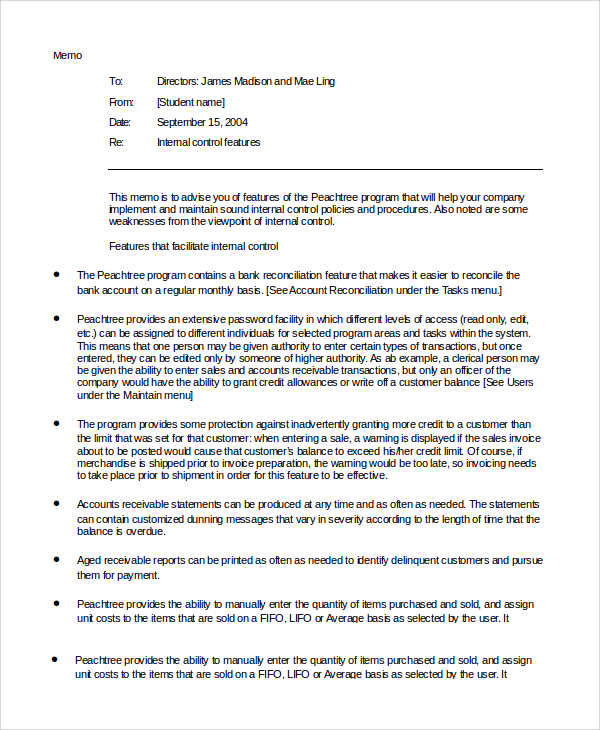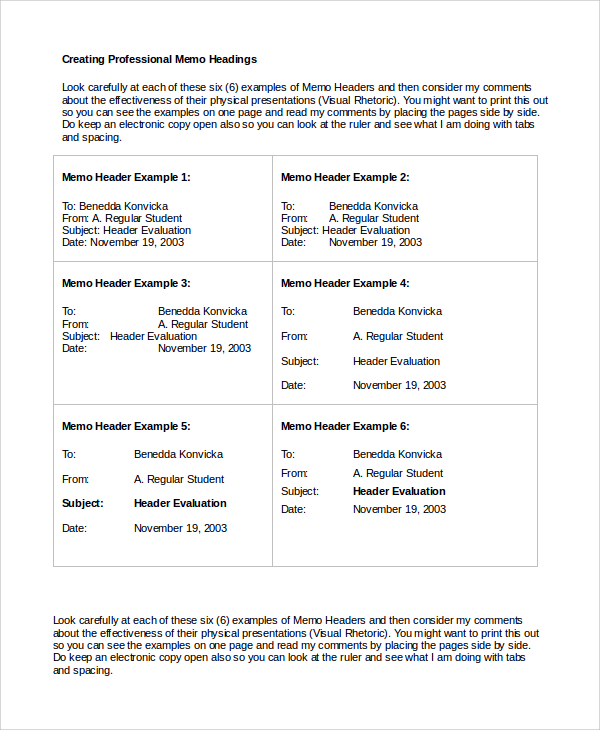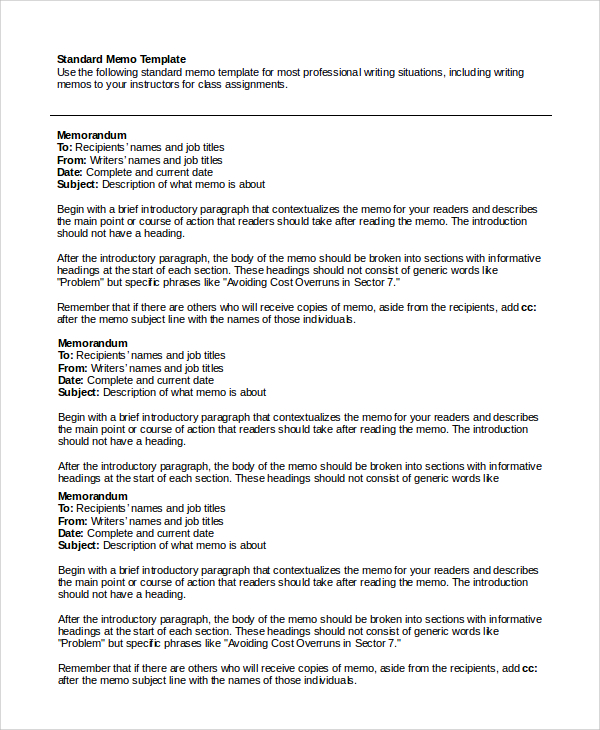A Latin verb Memo gave birth to the word “memorandum” meaning “to mention, to inform” which is nowadays better known as “memo.” Therefore, as the definitions direct towards the purpose of a word, the memo is an official form sample of document that is meant for professional notifications and announcements. Sample Memos are widely available and outline various sample forms and purpose of memo drafting which in turn helps officials get an idea about the memo on different topics.
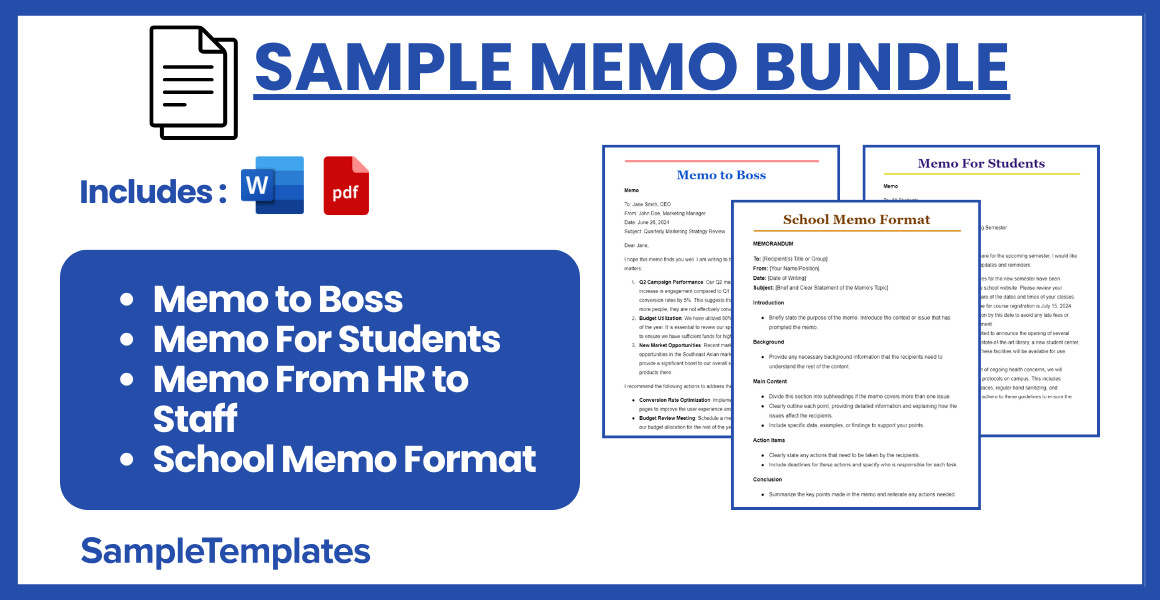
Memo to Boss
Memo
To: Jane Smith, CEO
From: John Doe, Marketing Manager
Date: June 26, 2024
Subject: Quarterly Marketing Strategy Review
Dear Jane,
I hope this memo finds you well. I am writing to bring to your attention the following matters:
- Q2 Campaign Performance: Our Q2 marketing campaigns have shown a 15% increase in engagement compared to Q1. However, there is a noticeable drop in conversion rates by 5%. This suggests that while our campaigns are reaching more people, they are not effectively converting leads into customers.
- Budget Utilization: We have utilized 80% of our allocated budget for the first half of the year. It is essential to review our spending plan for the remaining quarters to ensure we have sufficient funds for high-impact campaigns scheduled for Q4.
- New Market Opportunities: Recent market research has identified potential opportunities in the Southeast Asian market. Expanding into this region could provide a significant boost to our overall sales, given the growing demand for our products there.
I recommend the following actions to address these issues:
- Conversion Rate Optimization: Implement A/B testing and refine our landing pages to improve the user experience and increase conversion rates.
- Budget Review Meeting: Schedule a meeting with the finance team to reassess our budget allocation for the rest of the year.
- Exploratory Research: Initiate detailed market research and feasibility studies for potential expansion into the Southeast Asian market.
Please let me know if you require any additional information or if there are any further steps you would like me to take.
Thank you for your attention to these matters.
Best regards,
John Doe
Marketing Manager
[email protected]
(555) 123-4567
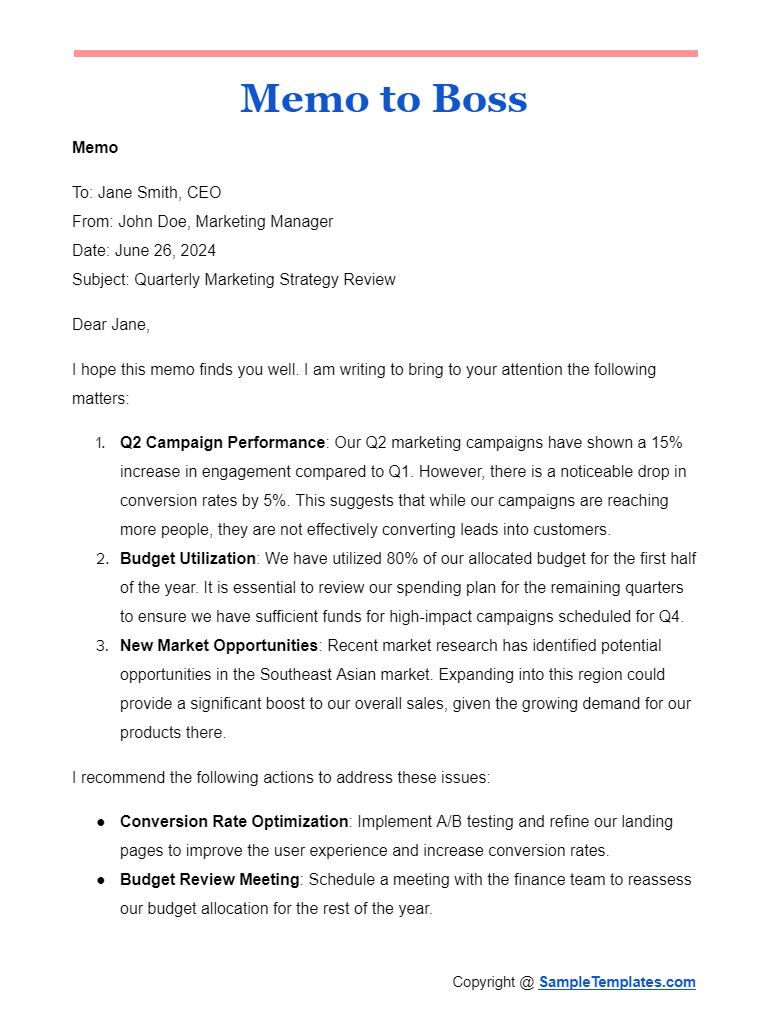
Memo For Students
Memo
To: All Students
From: [Your Name], [Your Position]
Date: June 26, 2024
Subject: Important Updates for the Upcoming Semester
Dear Students,
I hope this memo finds you well. As we prepare for the upcoming semester, I would like to bring to your attention several important updates and reminders:
- Class Schedules: The class schedules for the new semester have been finalized and are now available on the school website. Please review your schedule and ensure that you are aware of the dates and times of your classes.
- Registration Deadlines: The deadline for course registration is July 15, 2024. Make sure to complete your registration by this date to avoid any late fees or complications with your course enrollment.
- New Campus Facilities: We are excited to announce the opening of several new facilities on campus, including a state-of-the-art library, a new student center, and upgraded science laboratories. These facilities will be available for use starting August 1, 2024.
- Health and Safety Protocols: In light of ongoing health concerns, we will continue to enforce health and safety protocols on campus. This includes mandatory mask-wearing in indoor spaces, regular hand sanitizing, and maintaining social distancing. Please adhere to these guidelines to ensure the safety of all students and staff.
I recommend taking the following actions:
- Review and Print Schedule: Check your class schedule online and print a copy for your reference.
- Complete Registration: Register for your courses before the July 15 deadline.
- Explore New Facilities: Take some time to visit and familiarize yourself with the new campus facilities once they are open.
- Follow Safety Protocols: Ensure you have masks and hand sanitizers ready and follow the health guidelines at all times on campus.
Please let me know if you have any questions or need further assistance.
Thank you for your attention to these updates. Wishing you all a successful and productive semester!
Best regards,
[Your Name]
[Your Position]
[Your Contact Information]

Memo From HR to Staff
Memo
To: All Staff
From: Sarah Johnson, HR Manager
Date: June 26, 2024
Subject: Upcoming Policy Changes and Reminders
Dear Staff,
I hope this memo finds you well. I would like to inform you about some important policy changes and reminders that will be effective from July 1, 2024:
- Remote Work Policy Update: Starting next month, our remote work policy will be updated to allow employees to work from home up to three days per week. Please review the updated policy document on the intranet for detailed guidelines and ensure your work arrangements comply with these changes.
- Annual Performance Reviews: The annual performance review process will commence on July 15, 2024. Managers will be scheduling one-on-one meetings with their team members to discuss performance, goals, and development plans. Please prepare by completing the self-assessment form available on the HR portal.
- Health and Wellness Program: We are excited to launch a new health and wellness program aimed at promoting a healthy work-life balance. The program will include weekly yoga sessions, nutritional workshops, and access to a mental health counselor. More information on how to participate will be shared soon.
- Training and Development Opportunities: There are several new training and development opportunities available, including leadership training, technical skill enhancement workshops, and professional certification courses. Please visit the HR section of the intranet to explore these opportunities and register for courses that interest you.
Actions to be taken:
- Review Remote Work Policy: Check the updated remote work policy document and plan your work schedule accordingly.
- Prepare for Performance Reviews: Complete your self-assessment form and be ready for your review meeting.
- Participate in Wellness Program: Look out for announcements regarding the health and wellness program and participate in activities that interest you.
- Register for Training: Explore available training opportunities and register for courses that can help with your professional development.
Please let me know if you have any questions or require further assistance.
Thank you for your attention to these matters.
Best regards,
Sarah Johnson
HR Manager
[email protected]
(555) 789-0123
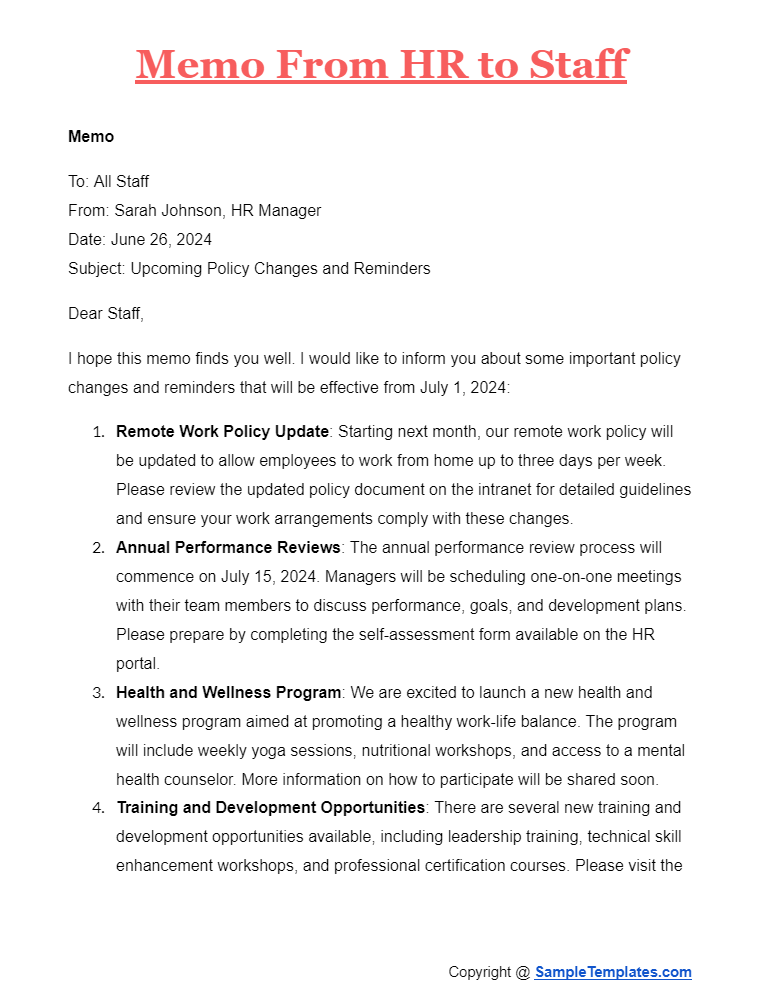
School Memo Format
MEMORANDUM
To: [Recipient(s) Title or Group]
From: [Your Name/Position]
Date: [Date of Writing]
Subject: [Brief and Clear Statement of the Memo’s Topic]
Introduction
- Briefly state the purpose of the memo. Introduce the context or issue that has prompted the memo.
Background
- Provide any necessary background information that the recipients need to understand the rest of the content.
Main Content
- Divide this section into subheadings if the memo covers more than one issue.
- Clearly outline each point, providing detailed information and explaining how the issues affect the recipients.
- Include specific data, examples, or findings to support your points.
Action Items
- Clearly state any actions that need to be taken by the recipients.
- Include deadlines for these actions and specify who is responsible for each task.
Conclusion
- Summarize the key points made in the memo and reiterate any actions needed.
- Offer to provide further information or assistance if needed.
Attachments
- List any attachments included with the memo.
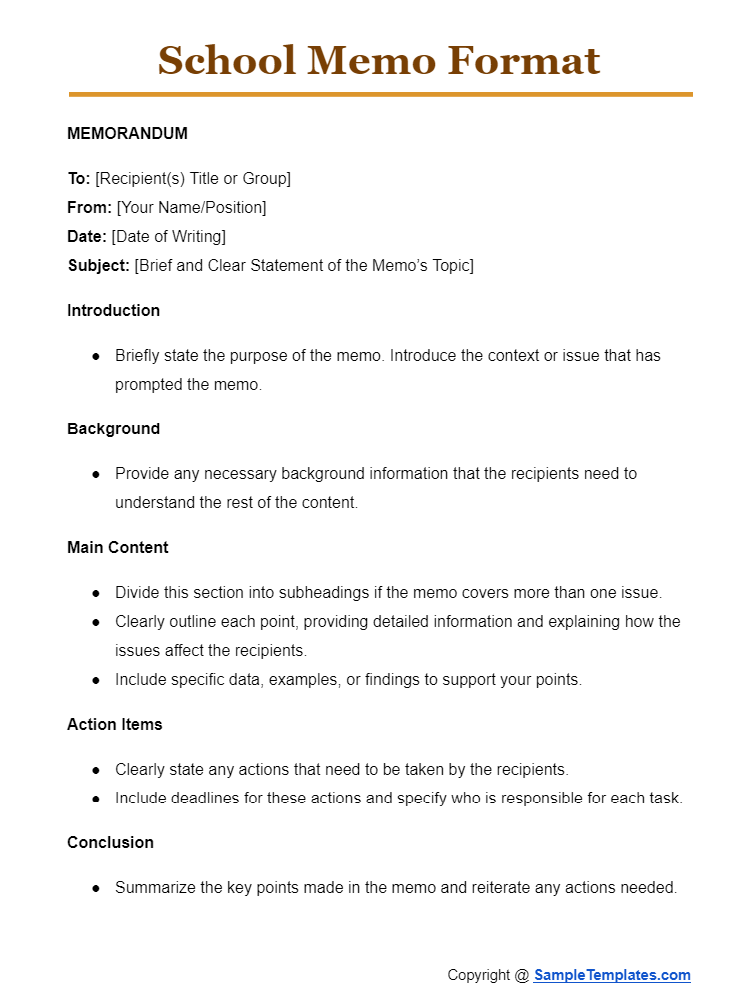
Browse More Templates On Memo
Financial Memo Template

Investment Memo Template

Sample Memo Template
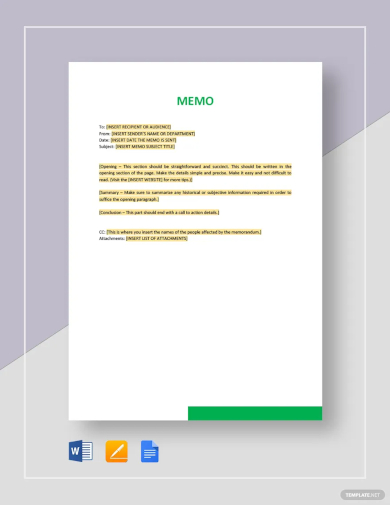
Investment Committee Memo Template
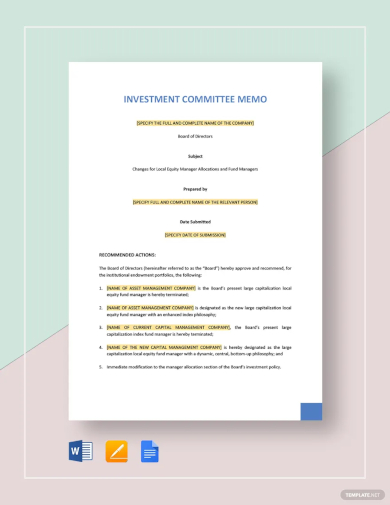
Debit Memo Template
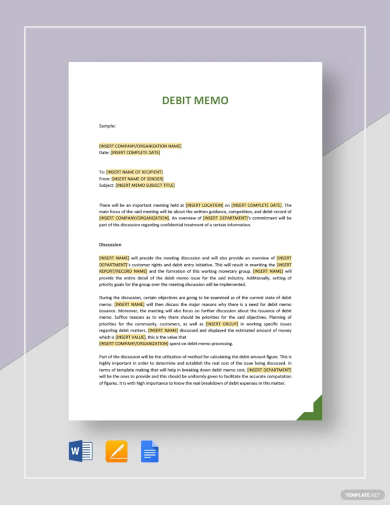
How To Write a Memo?
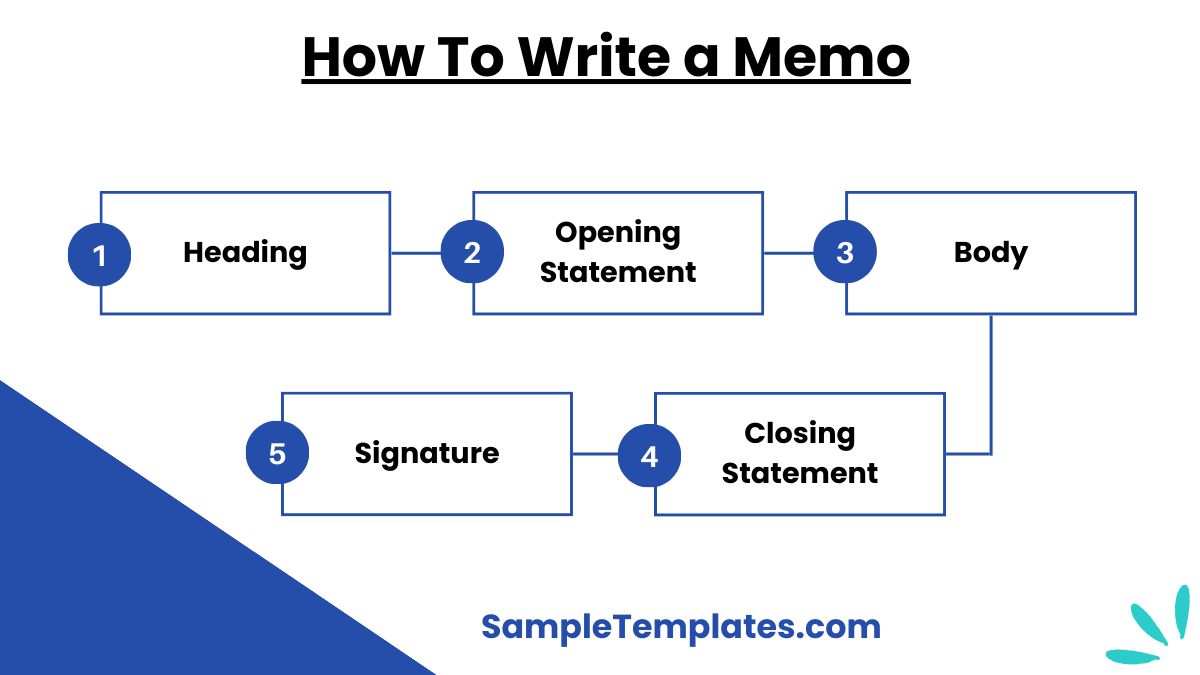
- Heading:
- Include the word “Memo” at the top.
- Provide the necessary headings: To, From, Date, and Subject (Re:).
- Ensure the subject line is clear and concise, summarizing the memo’s purpose.
- Opening Statement:
- Start with a brief introduction that states the memo’s purpose.
- Provide context if necessary, explaining why the memo is important.
- Body:
- Organize the content in a clear, logical manner.
- Use short paragraphs and bullet points for easy readability.
- Include all relevant information, but be concise and to the point.
- Address any questions or concerns the recipients might have.
- Closing Statement:
- Summarize the key points or actions required.
- Provide any necessary deadlines or follow-up instructions.
- Include a call to action if needed, specifying what you expect from the recipients.
- Signature:
- End with your name and title.
- If the memo is formal, consider adding a handwritten signature above your typed name.
Basic Internal Memo Template

Credit Memo Template
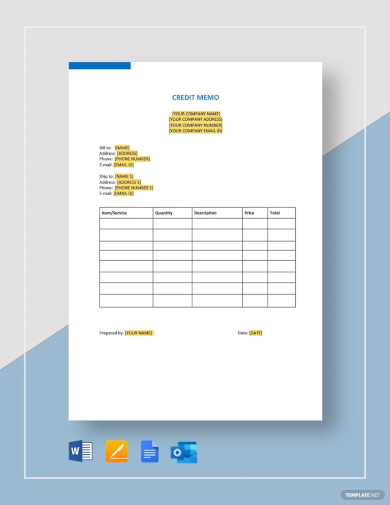
Sample Executive Memo Template
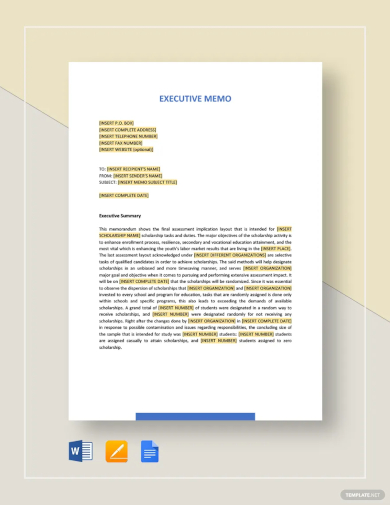
Audit Memo Template
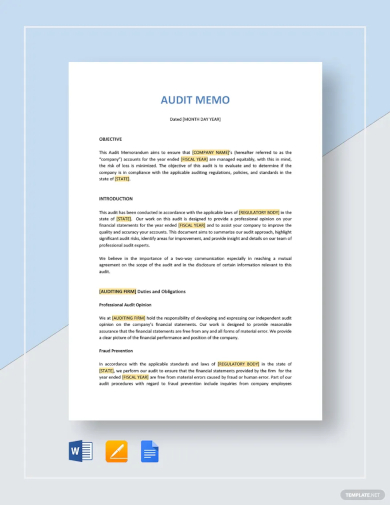
Research Memo Example
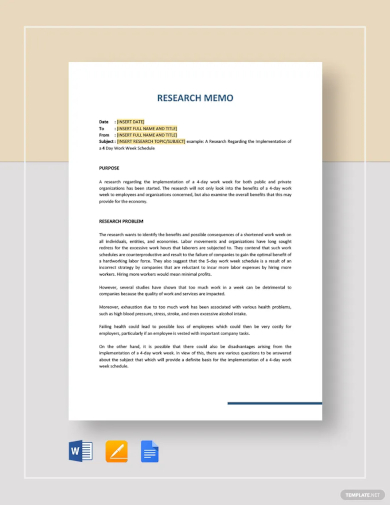
External Audit Memo Template

Formal Meeting Memo Template

Sample Strategy Memo Template
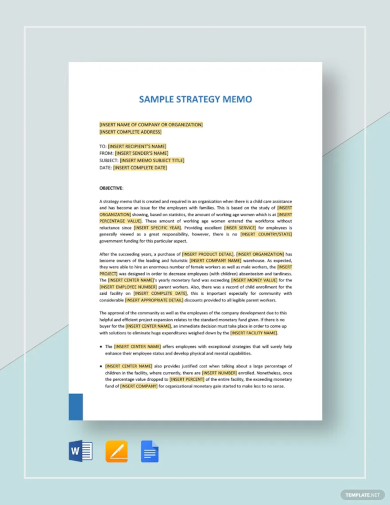
Action Memo Template
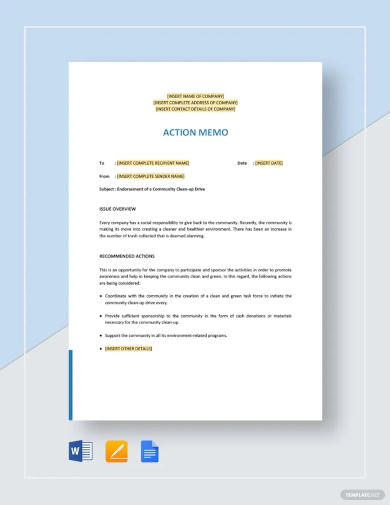
Proposal Memo Template
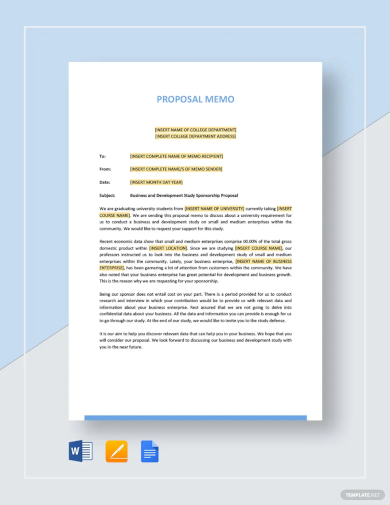
Staff Meeting Memo Outline Template
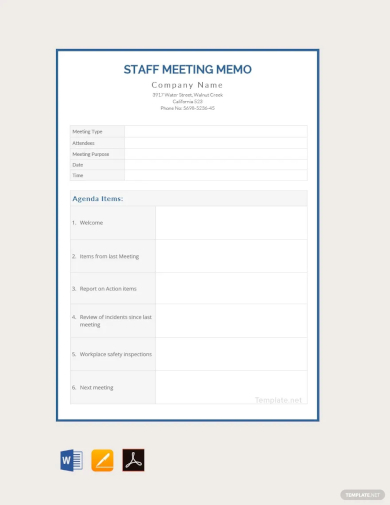
Importance of Memo
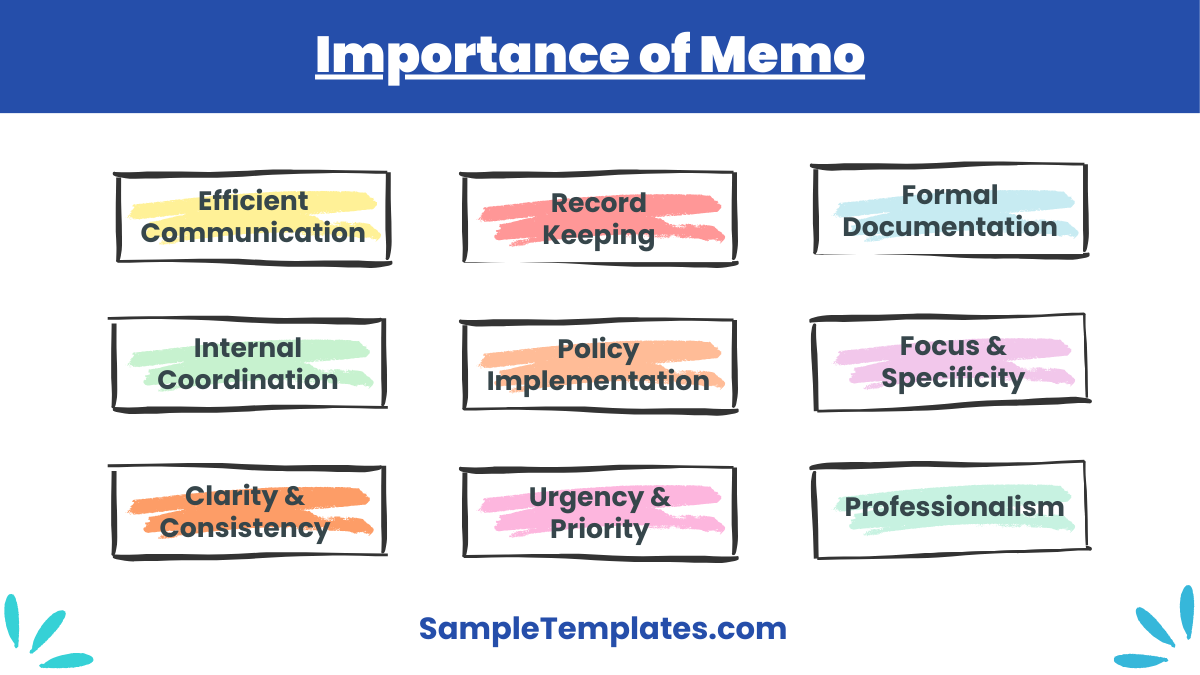
- Efficient Communication:
- Memos facilitate quick and clear communication within an organization, ensuring that important information is shared promptly and accurately.
- Record Keeping:
- Memos serve as a written record of communications, decisions, and policies, which can be referenced in the future for accountability and clarity.
- Formal Documentation:
- Memos provide a formal way to communicate official information, ensuring that all employees receive and acknowledge the same message.
- Internal Coordination:
- Memos help coordinate activities and efforts within departments or teams, aligning everyone towards common goals and actions.
- Policy Implementation:
- Memos are an effective way to communicate new policies, procedures, and changes within an organization, ensuring compliance and understanding.
- Clarity and Consistency:
- By providing a standardized format, memos ensure that information is communicated consistently and without ambiguity, reducing misunderstandings.
- Focus and Specificity:
- Memos are typically targeted to specific individuals or groups, ensuring that the message is relevant and focused on the intended audience.
- Actionable Information:
- Memos often include clear instructions and deadlines, guiding recipients on the actions they need to take, which enhances productivity and efficiency.
- Urgency and Priority:
- Memos can convey a sense of urgency or priority, prompting timely responses and actions from recipients.
- Professionalism:
- Memos maintain a professional tone and format, reinforcing the seriousness and importance of the communication within the organizational context. You can also see more on Employee Memo.
Meeting Minutes Memo Template

Sample Reminder Memo Template

Legal Memo Template

Sample Deal Memo Template

Policy Memo Template
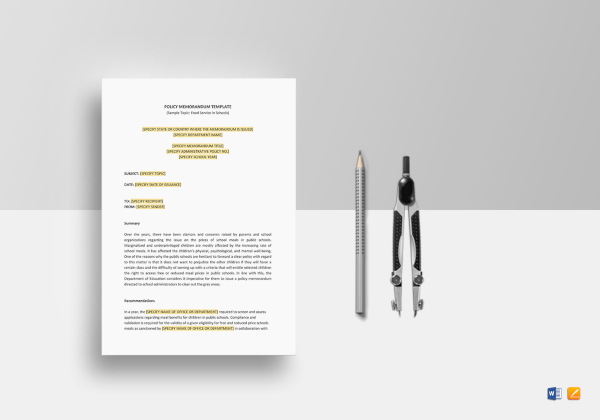
Interoffice Memo Template
Interoffice Memo sample word file is available to be used as a template and draft the memo for interoffice professional communications which ranges from mundane to serious notes and information. You can also see more on Board Memo.
Legal Writing Memo Template
Legal Word Memo Samples file is efficiently crafted to specify the objectives of the memo in more formal and technical words which will serve the purpose of communicating information with a formal tone.
Business Memo in Word Format
An official document that is meant for professional departments in the office and fulfills the purpose of communicating inter and intra-office formal interaction, is called a business memo sample word.
Usage and Benefits of Memo
A sample memorandum or memo is an official form of document that has many forms and uses in an official foreground. A sample memo formats is used for purposes that are specific to an office or institution. The Sample Memo Formats is used as standardized version of format for memo and is customized to fit the purpose of an institution or office.
- Clarity and Precision: Memos provide clear and concise information, ensuring that messages are understood without ambiguity.
- Documentation: Memos serve as official records of decisions, policies, and communications, which can be referred to in the future.
- Time-Saving: Memos are quick to write and distribute, saving time compared to more formal communication methods.
- Focused Communication: Memos are typically directed to specific individuals or groups, ensuring that the right people receive relevant information.
- Cost-Effective: Memos can be distributed electronically or via internal mail, reducing the costs associated with other forms of communication like printed materials or meetings.
- Consistency: Standardized memos ensure that information is communicated uniformly, reducing the risk of misinterpretation.
- Urgency: Memos can convey a sense of urgency, prompting immediate attention and action from the recipients.
- Formal Tone: Memos often have a formal tone, which is suitable for professional and business environments.
- Actionable: Memos typically outline specific actions to be taken, providing clear guidance and expectations for recipients.
- Accountability: By documenting communication and instructions, memos hold individuals accountable for their responsibilities and actions.
In the field of law, memos are more commonly based on the subject line of legal memo policies and contracts for functioning of deal among two individual parties. A sample memo formats can be two pages long depending on the details.
Free Internal Memo Template
Within an office, communication is formal and routine and remains in continuous cycles of review by responsible officials. Information regarding this is available as templates of internal word memo sample.
Supervisor Policy Memo Template
A policy Blank Memo Samples is a legalized and official document that is drafted for the employee or intern or trainee that is addressed to their supervisor stating probable policy.
Printable Action Memo in Word
Target Audience for the Memo Samples
Higher officials or managers often appoint secretaries. One of the principle tasks of the secretaries is to draft communication letter sample for a variety of purposes and circumstances. These communication letters or memorandums or memos are often cumbersome to draft amidst the busy schedule.
So the templates of Memo Samples are available and can be utilized by anybody who finds the memo of the purpose they are looking for. Apart from the people in the office who are working on their day to day information transfer by drafting memos, in schools, colleges, army, airports. Etc., usage of a memo is an indispensably important exercise.
Sample Achievement Memo to Employee Template
Professional Memo in Word
Professional Memo Template
Standard Memo Template
How Long Should Memos Be?
A memo could be 1 to 2 pages long, single-spaced, and left-justified. Instead of using indentations to show new paragraphs, skip a line between sentences. And it must be concise and direct to the point.
What Is the Difference Between a Memo and a Circular?
The difference between a memo and a circular is that a memo has more exclusivity. This document is made to remind somebody or a group of people about something that warrants action plan. One can also pass on an idea or sample proposal by simply issuing a memo. While a circular is for a large audience since it is like a general announcement and often contains several topics.
Why are Memos Important?
Memos are important since these documents contain important information that is distributed internally. It is one of the best ways to communicate with other members of the organization.
Does a Memo have a Signature?
A memo often does not require a signature, especially for informal internal communication. However, formal memos may include a signature for authentication or approval purposes.
A sample memo or sample memorandum is thus, a template of an official document that is used to communicate information in a formal and professional manner. For example, Army Memo Samples is used as an official document of communication between the different rank offices and departments of a single battalion.
If you have any DMCA issues on this post, please contact us.
Related Posts
FREE 13+ Business Memo Templates in MS Word | PDF | Google Docs
FREE 15+ Memorandum Samples in MS Word | PDF
FREE 10+ Strategy Memos in MS Word | Google Docs
FREE 8+ Executive Memo Templates in MS Word | Google Docs
FREE 6+ External Memo Templates in MS Word | PDF | Google Docs
FREE 8+ Bid Memo Templates in MS Word | PDF
FREE 8+ Notice Memos in PDF
FREE 9+ Budget Memo Templates in MS Word | PDF
FREE 8 Board Memo Templates in PDF
News Report
Written Warning
Teacher Lesson Plan
Visitors Log
Reflective Writing
Briefing Note
